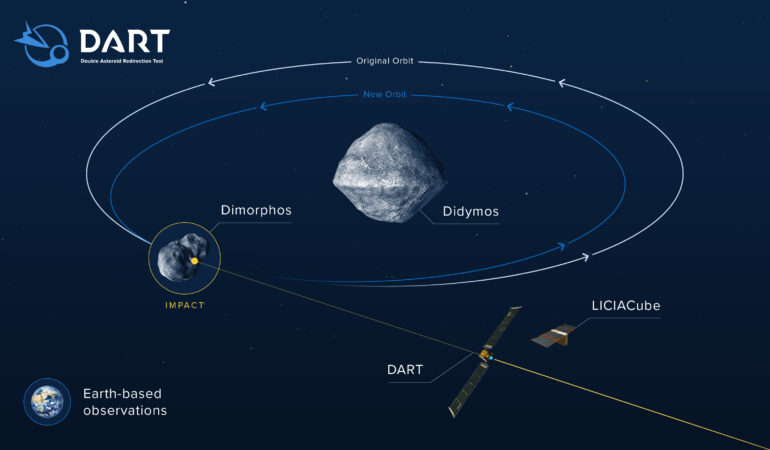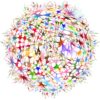NASA recently crashed a spacecraft into an asteroid in an attempt to push the rocky traveler off its trajectory. The Double Asteroid Redirection Test – or DART – was meant to test one potential strategy for preventing an asteroid from colliding with Earth. The collision occurred on Sept. 27, 2022, and on Oct. 11, 2022, NASA announced that the mission had successfully changed the orbit of the asteroid Dimorphos. David Barnhart is a professor of astronautics at the University of Southern California and director of the Space Engineering Research Center there. He watched NASA’s live stream of the successful mission and explains what happened.
This video, sped up 10 times the actual speed, shows a series of images taken one second apart by the DART spacecraft as it approached Didymos and the smaller Dimorphos before colliding with Dimorphos. The last few images are shown in real speed.
1. What do the images from DART show?
The first images, taken by a camera aboard DART, show the double asteroid system of Didymos – about 2,500 feet (780 meters) in diameter – being orbited by the smaller asteroid Dimorphos, which is about 525 feet (160 meters) long.
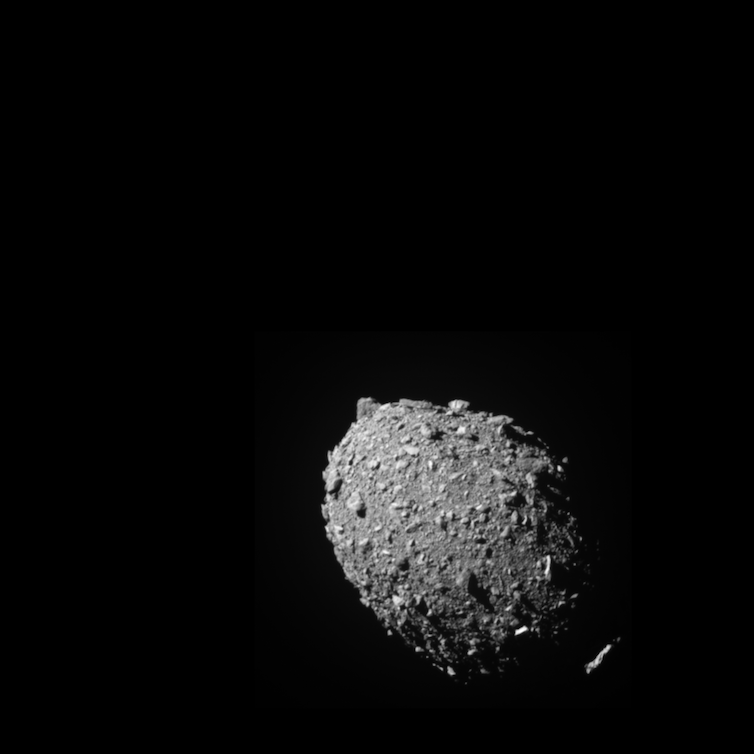
This image of the moonlet Dimorphos was taken 11 seconds before the DART spacecraft crashed into the asteroid.
NASA/Johns Hopkins APL
As the targeting algorithm on DART locked onto Dimorphos, the craft adjusted its flight and began heading toward the smaller of the two asteroids. The image taken at 11 seconds before impact and 42 miles (68 kilometers) from Dimorphos shows the asteroid centered in the camera’s field of view. This meant the targeting algorithm was fairly accurate and the craft would collide right at the center of Dimorphos.
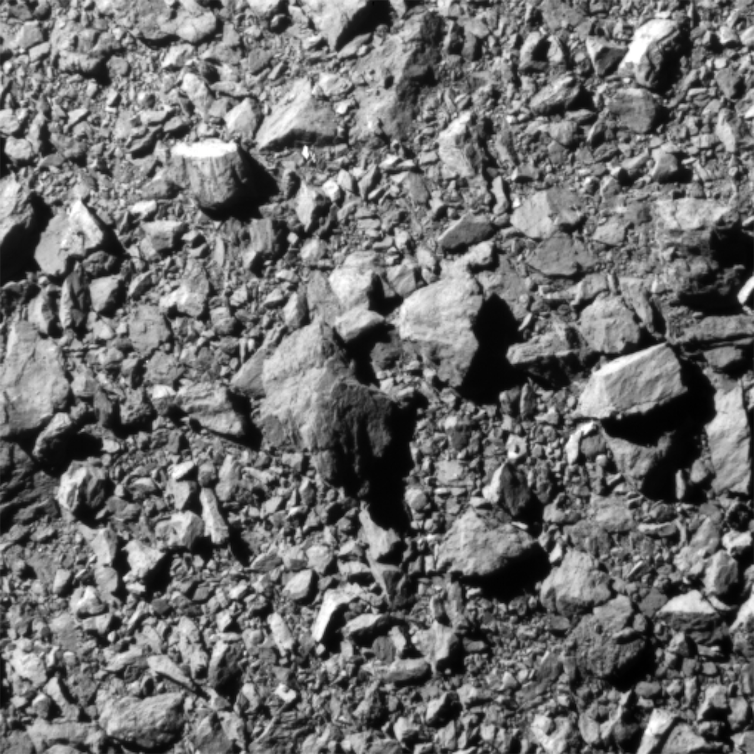
This photo shows the textured and rock-strewn surface of Dimorphos and was taken two seconds before DART crashed into the surface.
NASA/Johns Hopkins APL
The second-to-last image, taken two seconds before impact, shows the rocky surface of Dimorphos, including small shadows. These shadows are interesting because they suggest that the camera aboard the DART spacecraft was seeing Dimorphos directly on but the Sun was at an angle relative to the camera. They imply the DART spacecraft was centered on its trajectory to impact Dimorphos at the moment, but it’s also possible the asteroid was slowly rotating relative to the camera.
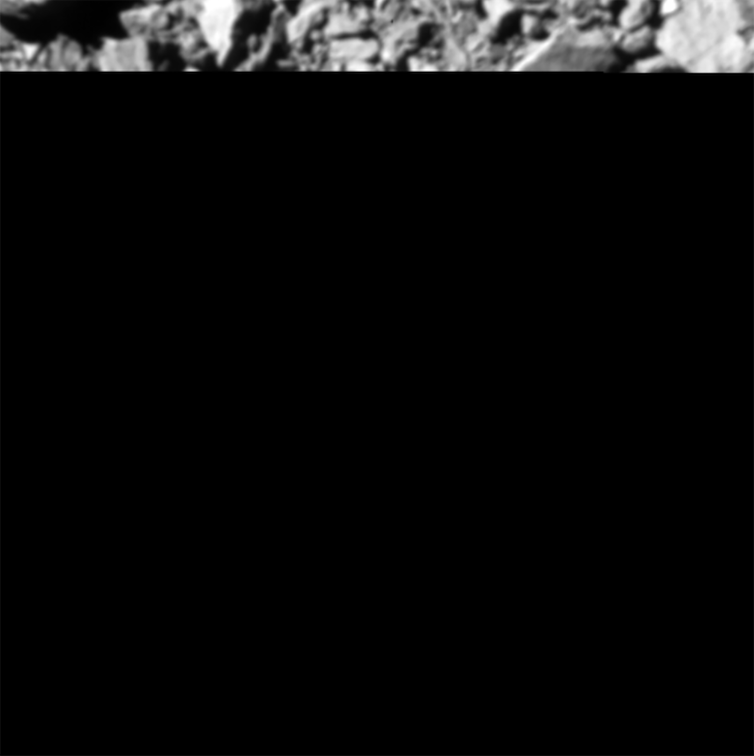
The final image from DART, taken one second before impact, was not able to fully transmit back to Earth.
NASA/Johns Hopkins APL
The final photo, taken one second before impact, only shows the top slice of an image, but this is incredibly exciting. The fact that NASA received only part of the image suggests that the shutter took the picture but DART, traveling at around 14,000 mph (22,500 kph), was unable to transmit the complete image before…
